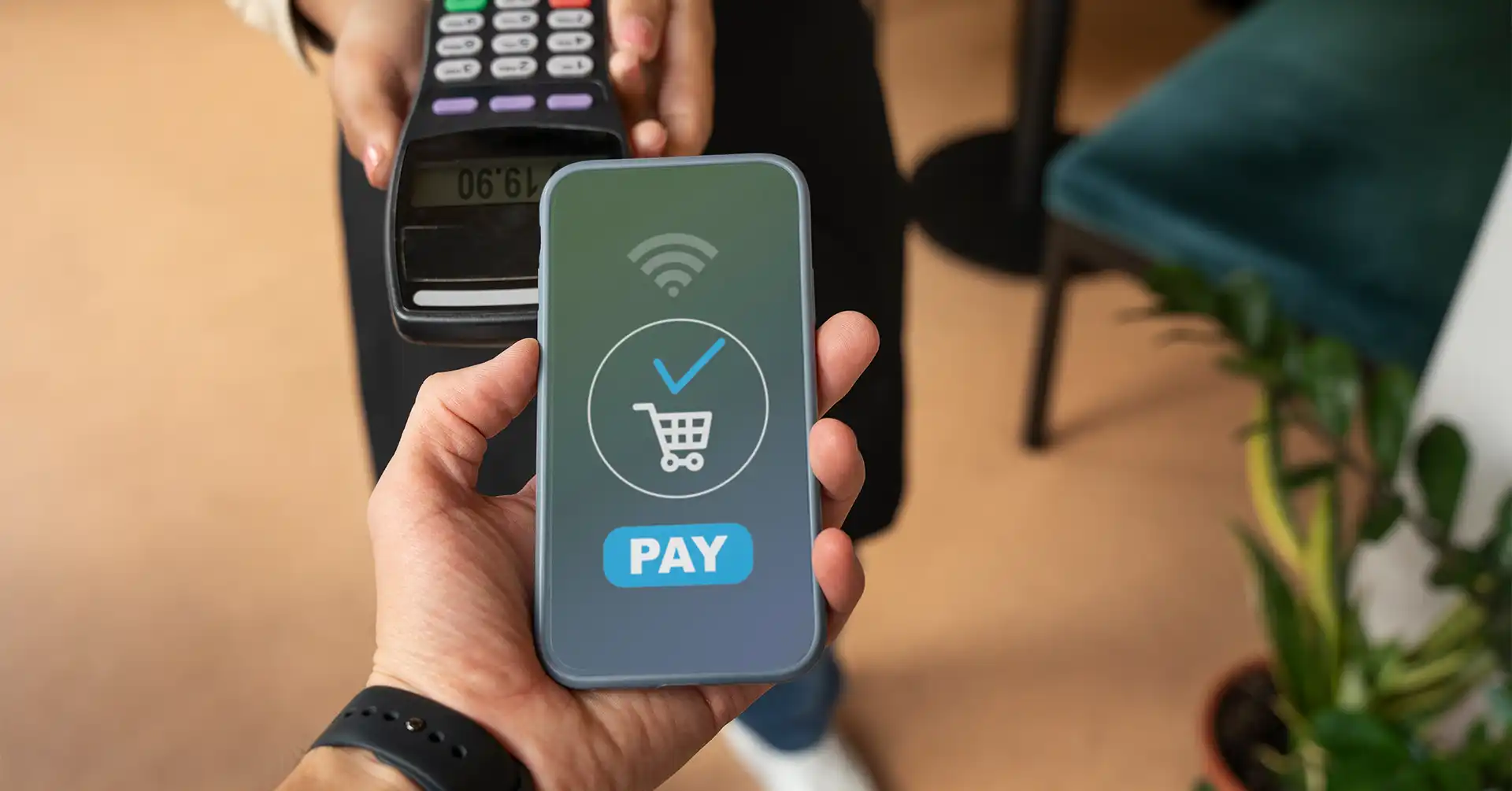Peer-to-peer payment applications enable individuals to send money directly from one person to another through their smart devices. They offer a simple and easy mechanism in place of traditional banking, providing individuals a way to carry out immediate transactions without an exchange of cash or checks. Sending money instantly for a dinner celebration with friends, sharing rent with a roommate, or just sending a birthday gift can now be done, thanks to P2P Payment Apps.
Initially, they operate by connecting to a user’s account—say, a bank account, a credit card, or a debit card. Then, one ought to transfer another user’s money to the account with only a few taps on their phone. It is typically very quick, safe, and extremely user-friendly, so most Americans use it.
Development of P2P Payments in the US
P2P Payment Apps have evolved rapidly in the US. Earlier, one had to go to the banks or use postal services to send money across. Only with the advent of the internet and online banking, money transfers became easier.
The first came with the introduction of PayPal during the late 1990s, which opened the path to further digital payments and, more recently, mobile P2P Payment Apps such as Venmo and Cash App. With these applications came convenience; sending money was performed on the go at all times and in all places.
For instance, over the last ten years, P2P Payment Apps have been integrated with social features in the transfer of money, and as a result, it is no longer just a financial transaction, but it is also about social interaction. Venmo allows people to write comments and also to add some emojis to their payments, thus making it an amusing activity of sending crispy bills.
Advances in security technology also propelled the evolution of P2P Payment Apps. Today’s P2P Payment Apps use robust encryption and multi-factor authentication to protect users’ financial information and ensure that transfers are safe and secure.
How P2P Payment App Works
P2P Payment Apps simplify the process of sending money to friends, family, or businesses. Users can connect their bank accounts or credit cards to these apps, allowing for frictionless transactions. To send money, one would pick a contact, key in the amount, and okay the payment. Once the transaction is made, the recipient gets a notification with the option to transfer the balance to the bank account or to keep it in the app balance. It is for this ease that P2P Payment Apps have caught on, with most Americans eyeballing these for all their everyday transactions.
Ensuring Security and Encryption
They truly take care of your money and personal information. The use of advanced encryption with any given transaction literally allows no chance for hackers to get whatever is running through. In addition, most of these apps offer MFA, a method where a user’s identity is required to be proven in more than one step prior to the unlocking of their account. This facilitates a very difficult compromise, merging the two aspects to safeguard your funds well, securing your peace of mind in using P2P Payment Apps.
Common Features of P2P Apps
Available for the majority of the Apps that function for sending and receiving money is equipped with different features purposed to easily manage money. The other added advantage is that these Apps split bills between friends and also request payments. Indeed, this is an added advantage as it helps monitor account activity. To date, a few even have social functionalities such as sharing payments on a feed, and some have additional services such as investing or buying cryptocurrency. This is what makes P2P Payment Apps more versatile in handling daily financial needs.
Popular P2P Payment Apps in the US
Venmo: The Social Payment App
Venmo is one of the most popular P2P Payment Apps in the United States. In addition to payment functionality, it incorporates a social element: the capability for users to share payment activity with friends. Whether you’re splitting a dinner bill or chipping in for a group gift, Venmo makes it easy and fun. It will connect to a bank account or credit card, and payments are really quick and safe. The beauty of Venmo lies in its social feed—it’s a space where you can comment and put emojis next to your transactions. In this manner, the money-transfer process takes on a more engaging form.
Cash App: Simple Transfers Plus More
Another product developed by Square Inc., Cash App, is undoubtedly among the highest-grossing P2P Payment Apps. It is preferred because of its ease of use plus a few other reasons. Other than that, it is also a platform one can buy Bitcoin, invest in a stock, and receive direct deposit. Anyone who demands a little more function from their payment app will find that it really is the best payment app that there is. In addition, Cash App provides a physical Cash Card pinable anywhere Visa is held, to carry their digital balance with them to real-world spending.
Zelle: Instant Bank Transfers
Zelle is one of the P2P Payment Apps, executed fast and directly integrated into most major banks across the US. Zelle allows you to send and receive money directly through your bank’s app when it is part of the many in partnership, usually in a matter of minutes. There aren’t any separate app downloads either, so this way, it proves to be pretty convenient. Specifically good for sending money to less techno-savvy recipients, Zelle provides one fast and well-protected transfer using the bank’s infrastructure.
PayPal Solution: A Vintage Solution of Digital Payment
Hailing from the early days of online transactions, PayPal sits one of the original P2P Payment Apps. As it is widely used and accepted by many merchants and people, it is therefore user-friendly in regard to personal and business transactions. Apart from that, many people use PayPal to send money to their friends and families, pay for various goods and services, and even take care of international transfers. It has been gradually attaining people’s trust in digital payments over the period due to very tight security measures and buyer protection policies.
Benefits of P2P Payment Apps
Convenience
P2P payment apps are extremely convenient and fast. With just a tap from your phone, you can send money to a friend or family member—not necessarily from a bank’s savings—or even access an automated teller machine service. It’s quick, be it splitting dinner bills or paying for a ride. Such transactions are instantaneous; therefore, waiting for days for checks to clear is out, and even funds held up in one account take days to reflect in the other.
Cost-Effectiveness
P2P Payment Apps are more than just a cheaper way compared to the traditional money transfer systems. Half the apps may only charge a small fee when one transacts for regular-sized transactions. This, of course, varies between different apps; this very feature in the offering saves a ton of money compared to wire transfers and handling fees in cash. Besides, one doesn’t have to incur costs related to checks, such as printing and posting costs. The benefits accrue, and for those who frequently transfer and receive money, the benefits can be great.
Split Bills and Group Payments
The most popular uses of P2P payment apps are splitting bills and handling group payments. Be it a common dinner, group vacation, or the monthly house rent with roomies—these apps make breaking these bills super easy. Simply request money from as many people as you need and tick them off as either paid or not paid. This feature saves collecting cash or checking, while for you, group expenses become less painful and more organized.
Choosing the Right P2P Payment App
Consider several key elements when selecting the perfect P2P Payment App. To begin with, consider whether it is easily usable. You want to get an app that is intuitive in all possible ways. Then, have a look at the security features offered. Be sure the app will use a strong encryption method and offer additional features like two-factor authentication. Look at the payee fees; some of them will charge a fee on instant transfers and international transactions. Finally, consider having good customer support in case something goes wrong.
User Reviews and Features Comparison
The next step in selecting the appropriate P2P payment app is comparing the user reviews and features. The user will go through what each app has in terms of limits to transfer and the speed of transfer, and it may contain other possible features, such as bill splitting or integration with other better financial services. For user reviews and real insights into the overall user experience, scour through platforms like the App Store or Google Play. Such reviews can stress common snags or especially handy features and let you make the right choice.
Connected Banks and Other Services
This is an extremely important factor in choosing a P2P Payment App. Some apps, for instance, already have direct integration with many banks in the U.S., making transactions almost instant and very secure. While others, such as PayPal and Venmo, may provide a wider array of services, like cross-border transfers and links to online shopping platforms, before you commit to any of these apps, check if the app in question will link your bank account with other financial services you use. This type of integration will assist in easing your financial management and the general use of the account.
Conclusion
Selecting the best P2P Payment App will include factors such as ease of use, security, fees, customer support, user reviews, and how well bundled it is with banks and other services. You can appropriately be guided on choosing a P2P Payment application that best suits you when the preceding details are considered with harsh criticism. This ensures safe, easy, and efficient digital payment in all your everyday lifestyles.
FAQ
What are P2P Payment Apps?
P2P payment apps are online platforms through which funds are transferred by both the sender and receiver using their mobile devices. It is a much faster and more convenient way of transferring funds compared to using cash or even visiting a bank.
How does security on P2P payment apps come about?
Security features for most of the P2P payment apps include encryption, secure servers where they store your financial information, two-factor authentication, and fraud monitoring for safety in your transaction.
Can one use P2P payment apps to transact business?
Yes, most P2P payment apps can also be used for business transactions. Apps such as PayPal and Cash App cater for merchants accepting payments and issuing refunds. It also helps in the management of invoices.
Are there any fees with P2P Payment Apps?
Most P2P payment applications are free. However, there are additional charges when you perform some types of transfers—for example, the use of credit cards or during instant transfers. If there is such a section stating the charges and fees, check for it.
Also Read:






